Did you know that over 70% of driveways can be saved through timely repairs or resurfacing, rather than full replacements—saving homeowners thousands? If you’re staring at a crack in your driveway and wondering whether a simple fix will suffice or if you’re doomed to a costly total replacement, you’re not alone. The answer is more nuanced than you might think. In this comprehensive guide, we’ll break down exactly how to assess your driveway, what repair options are truly effective, and how you can make a smart, lasting choice without overspending.
Startling Facts About Driveway Repair and Longevity
“Over 70% of driveways can be saved through timely repairs or resurfacing, rather than full replacements—saving homeowners thousands.”
Driveway repair often offers a viable alternative to complete driveway replacement, which is not only costlier but can also be disruptive and time-consuming. The longevity of your driveway largely depends on the driveway material—whether it’s a concrete driveway, asphalt driveway, paver driveway, or gravel driveway—and the frequency and quality of maintenance. While it’s tempting to assume that a few surface cracks mean a full redo is inevitable, timely repairs can typically extend the life of your driveway by years, boosting curb appeal and protecting your home’s value.
Many homeowners are surprised to learn just how much they can save money on driveway repair and maintenance with proper care. In the long run, early crack filling, sealcoating, and resurfacing might cost a fraction of full replacement, and can prevent expensive damage down the line. Regularly maintaining your driveway, regardless of material, is always less expensive than waiting until structural failure forces an expensive option like complete replacement.
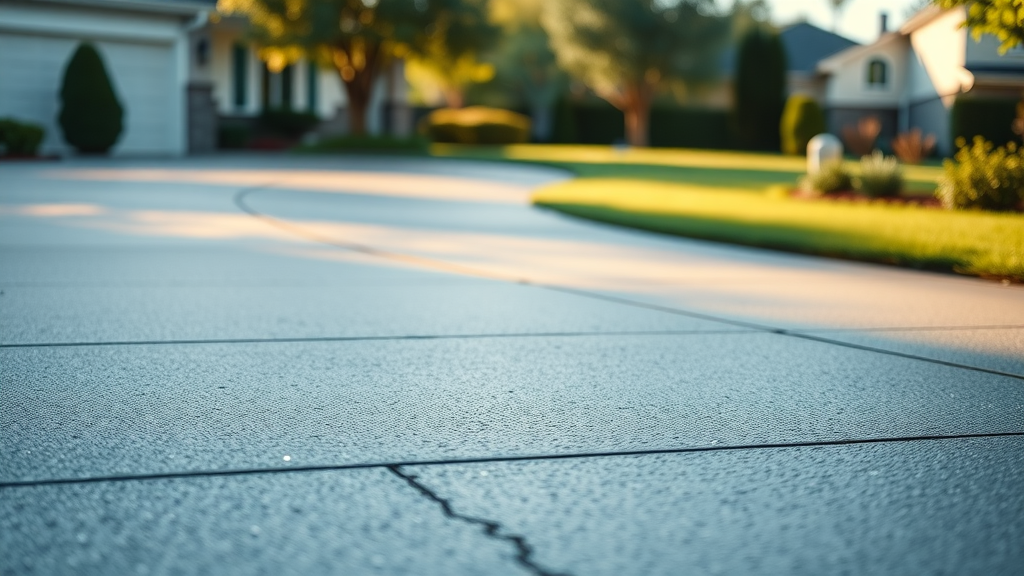
What You’ll Learn About How to Fix a Crack or Redo Driveway
-
How to assess driveway cracks and damage
-
When fixing a crack or redoing the whole driveway makes financial and structural sense
-
Pros and cons of crack filling, resurfacing, and full replacement
-
Longevity and effectiveness of each driveway repair method
-
How to save money on driveway maintenance
Understanding Driveway Damage: Deep Cracks, Surface Wear, and More
Identifying Deep Cracks and Their Risks
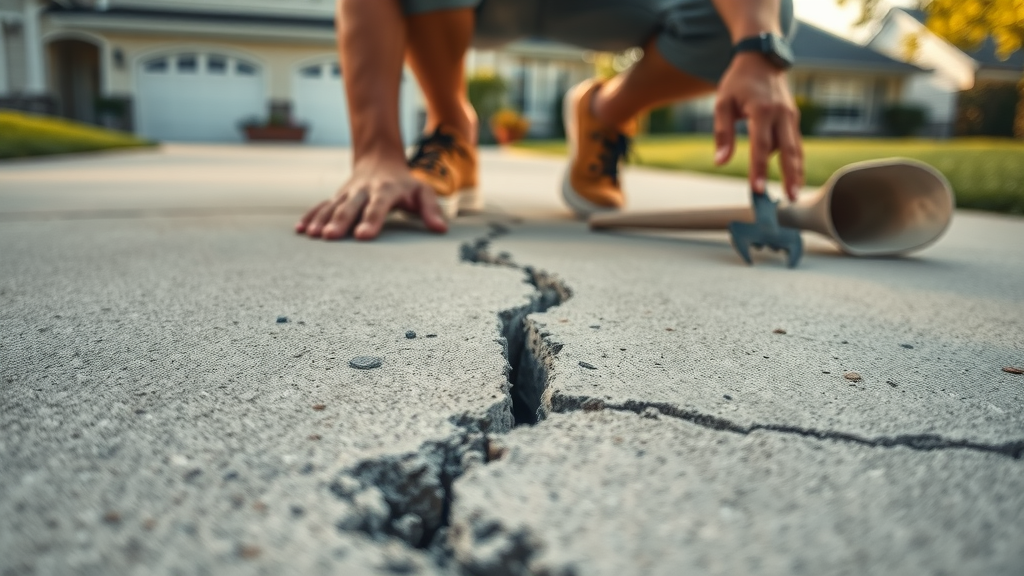
Not all cracks are created equal. While small cracks in the surface of your concrete driveway or asphalt drive may look unsightly, they often don’t pose a serious structural risk when caught early. However, a deep crack, especially one that extends through the base or shows signs of heaving and separation, is a red flag. Deep cracks allow water to penetrate the sub-base, leading to erosion, freeze-thaw damage, and ultimately, structural failure. If you notice deep cracks in your driveway, immediate action is crucial to prevent costly and extensive driveway repair.
The risks of deep cracks go beyond simple repairs. Water infiltration can create voids under the surface, which results in sinking, potholing, and even more cracks over time. This makes crack filling a less effective solution for such issues, and may signal that your driveway is approaching the end of its serviceable life. Recognizing when a crack is more than skin-deep can literally save money and prevent headaches in the long run, especially when weighing the pros and cons of fixing a crack or redoing the whole driveway.
Common Types of Driveways: Concrete Driveway, Asphalt Drive, Paver Driveway, and Gravel Driveway
-
Concrete driveway: Durable, with good curb appeal and lifespan, but susceptible to surface and deep crack issues if water infiltrates the base or tree roots disturb the slab.
-
Asphalt driveway: Flexible and affordable. However, deep cracks or shattering in asphalt drive often require more than just surface patching; maintenance helps extend life.
-
Paver driveway: Composed of individual bricks or stones. Problems arise when blocks settle unevenly or weeds grow in joints, but repairs are usually focused on individual pavers instead of the full surface.
-
Gravel driveways: More forgiving for small cracks and minor shifting, but base failures or significant surface erosion call for regrading, not replacement.
Understanding your driveway material is vital when considering whether to fix a crack or redo the whole driveway, especially for concrete driveways, asphalt driveways, paver driveways, or gravel driveways. The approach you take depends not only on the visible damage but also on the specific vulnerabilities of concrete driveways, asphalt driveways, gravel driveways, or paver installations—each of which brings unique repair challenges and cost implications.
The Science of a Fix: When Can You Fix a Crack or Redo Driveway Partially?
When Crack Filling and Sealcoating is Sufficient
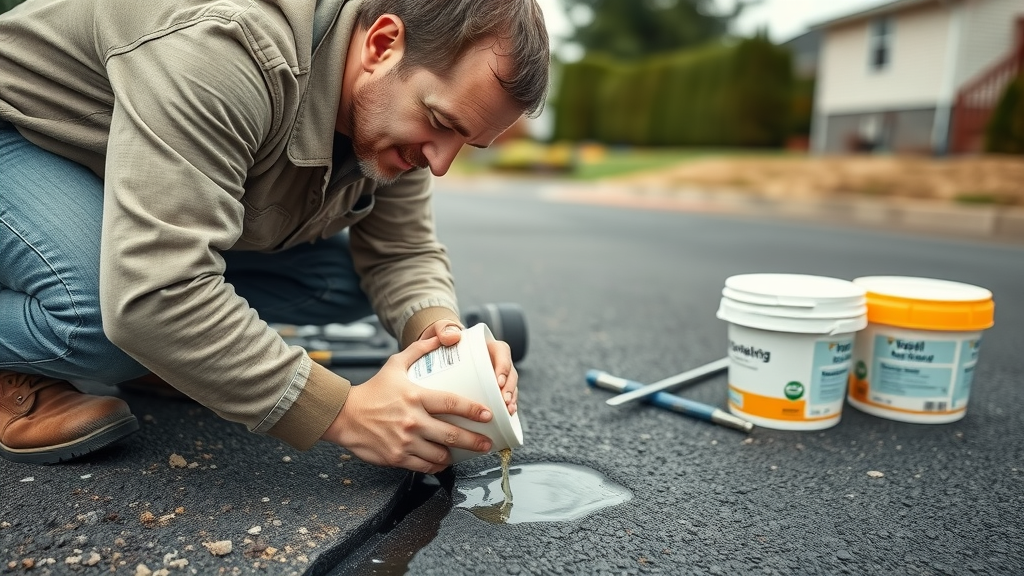
Crack filling and sealcoating are the first lines of defense in driveway repair—especially for those facing small cracks or surface wear in a concrete driveway or asphalt driveway. Crack filling uses elastomeric compounds to seal out water, preventing further erosion and the progression to a deep crack. Sealcoating, on the other hand, protects the entire surface from UV, salt, and water damage, giving it a refreshed look and adding years with proper maintenance.
This combination is most effective when applied early—before cracks deepen or the base is compromised. For many homeowners, crack filling and sealcoating may be all that’s needed to extend the life of a driveway, saving money in the process. However, it’s critical to monitor for larger damage, as these fixes will not resolve underlying structural failures. Regular inspection and immediate attention to small cracks can postpone more expensive options for years.
Structural Compromises: When Full Driveway Replacement is Necessary
Sometimes, repairs just won’t cut it. When your driveway material shows signs of extensive damage—such as widespread alligator cracking, sinking, severe base erosion, or repeated deep cracks that reappear after repair—it’s time to consider full driveway replacement. This is especially true if patchwork fails quickly, or if resurfacing offers only a temporary fix before major problems return.
Replacing a driveway is an investment, but in cases of structural compromise, it is the only way to restore both function and curb appeal for the long run. It’s also the recommended solution if you plan extensive landscaping or want to increase the value of your home before sale. Remember, although the upfront cost is higher, modern materials and techniques can deliver a new driveway that, with proper maintenance, lasts 20–30 years or longer.
The Resurfacing Solution: Bridging Fixing Cracks and Redoing Driveway
-
Driveway repair through resurfacing: A process that involves cleaning, milling, patching, and applying a new layer to restore aesthetics and function.
-
Cleaning, milling, patching: Prepping concrete driveway or asphalt driveway by removing debris, grinding out deep cracks, and repairing failed areas.
-
Leveling and applying a new surface layer: Ensures driveway material longevity and smooth finish, meeting both performance and curb appeal requirements.
Resurfacing is often the ‘best of both worlds,’ addressing more than just cracks while dodging the expense of a full replacement. After preparing the surface—cleaning away debris, milling out rough spots or shallow cracks, and patching up deeper areas—a thin but tough new layer of asphalt or concrete is applied.
This method covers cosmetic issues and refortifies the driveway beneath, restoring even heavily trafficked areas and preventing further damage from forming. If your driveway base is still sound, resurfacing can be a smart, cost-effective fix that delivers a finish just as attractive and reliable as replacing your driveway.
How Long Will Repairs or Resurfacing Last Compared to Replacement?
|
Driveway Type |
Crack Filling & Sealcoating |
Resurfacing |
Full Replacement |
Lifespan Extension |
Average Cost |
|---|---|---|---|---|---|
|
Concrete Driveway |
1–2 years |
8–15 years |
20–30 years |
$100–$300 |
$2,500–$6,000 |
|
Asphalt Driveway |
1–3 years |
7–12 years |
15–25 years |
$150–$350 |
$2,000–$5,000 |
|
Paver Driveway |
Replace individually |
7–12 years |
20–40 years |
$200–$600 |
$3,000–$10,000 |
|
Gravel Driveway |
Regrading |
5–10 years |
15–20 years |
$50–$200 |
$500–$2,000 |
As this table shows, resurfacing delivers impressive value—prolonging the usable life of your concrete, asphalt, or paver driveway for a significant portion of the cost of total replacement. Crack filling and sealcoating are ideal for extending life in the short term, while full replacement pays off for severe or structural failures. For most homeowners, knowing these timelines helps with strategic planning, budgeting, and maximizing the years of curb appeal and functionality you get from your driveway investment.
How Much Money Can You Save? Crack Fixing vs. Redo Driveway Cost Comparison
Typical Cost to Fix a Crack or Redo Driveway by Material
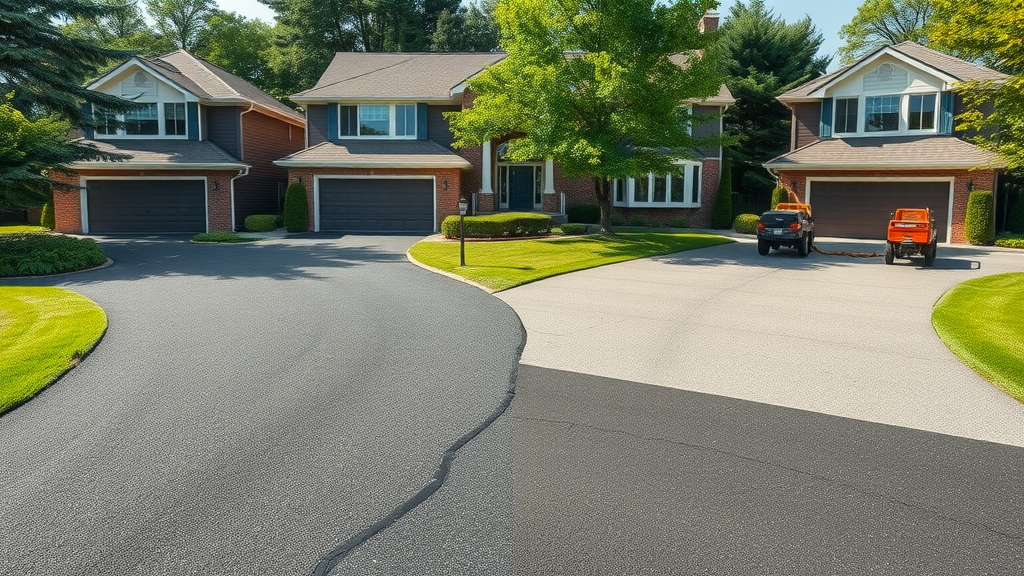
The cost to fix a crack or redo driveway varies widely based on factors like driveway material, square foot area, and the extent of the damaged area. Small crack repairs and sealcoating projects might set you back just a few hundred dollars, especially if tackled as a DIY project, while resurfacing generally costs $2 to $4 per square foot. Full replacements are the most expensive option, averaging $6,000 to $20,000 depending on driveway type and size.
Repair costs can seem high, but they’re minimal compared to replacing your driveway outright. Asphalt driveways tend to be less expensive to repair or resurface than concrete driveways, but costs can quickly escalate with deeper or widespread cracks, especially when addressing deep crack issues. Paver driveways, while beautiful, come with higher material and labor costs, whereas gravel driveways offer the most affordable repairs through regrading. For a more accurate estimate, consider the size of your driveway, extent of damage, and any existing base problems that could complicate repairs or require upgrading.
Save Money With Resurfacing Instead of Replacing a Driveway
“Resurfacing your driveway can save you up to 60% compared to the cost of a brand new installation—and deliver nearly the same longevity if done professionally.” – LegacyPavingPA
-
Signs your driveway can be resurfaced instead of replaced: minimal base damage, cracks limited to surface, no widespread heaving or sinking.
-
When crack filling is no longer viable: deep, recurring cracks, water infiltration, structural weaknesses visible after repairs.
-
Warning signs full replacement is needed: major base failure, repeated patching with no lasting solution, or significant unevenness that resurfacing won’t correct.
Carefully assessing the condition of your driveway often reveals options beyond simple crack filling or expensive replacement. For many, professional resurfacing is the sweet spot—maintaining appearance, structural integrity, and longevity without overspending.
People Also Ask: Should You Fix a Crack or Redo Driveway?
Is it better to repair or replace a driveway?
Answer:
-
It depends on extent of damage, type of driveway material, and your budget.
-
Minor cracks and surface wear can often be repaired effectively.
-
Major structural failures require full replacement.
When considering whether to fix a crack or redo driveway, always weigh the size, depth, and location of the damage. For many homeowners, repairing cracks or opting for resurfacing provides significant longevity at much less cost than replacing a driveway—unless extensive base damage or years of neglect have made repair impossible.
Should you repair driveway cracks?
Answer:
-
Repair cracks early to prevent water infiltration and worse damage.
-
Timely repairs extend your driveway’s lifespan.
Promptly fixing small cracks is vital for all driveway types, including asphalt driveways, concrete driveways, paver driveways, and gravel driveways. Water infiltration is the main enemy, so sealing cracks quickly guards against deeper, more costly repairs in the future.
Can a crack in a driveway be repaired?
Answer:
-
Yes, most surface cracks in concrete driveways, asphalt driveway, and paver driveway can be repaired.
-
Deep or wide cracks may signal underlying problems.
In many cases, small cracks are little more than a cosmetic issue, especially when caught early. For deep crack concerns or those spanning a large area, consult a professional to determine if resurfacing or full replacement is needed.
How much does it cost to redo a driveway?
Answer:
-
Driveway replacement costs range from $2,000 to $20,000 depending on size and material.
-
Resurfacing or crack filling is significantly less expensive.
Costs vary, but repairing or resurfacing a driveway is almost always cheaper than a full tear-out and replacement. Even complex repair jobs or resurfacing often cost less per square foot and extend the life of your driveway by years.
Choosing Between DIY and Professional Driveway Repair: Risks and Benefits
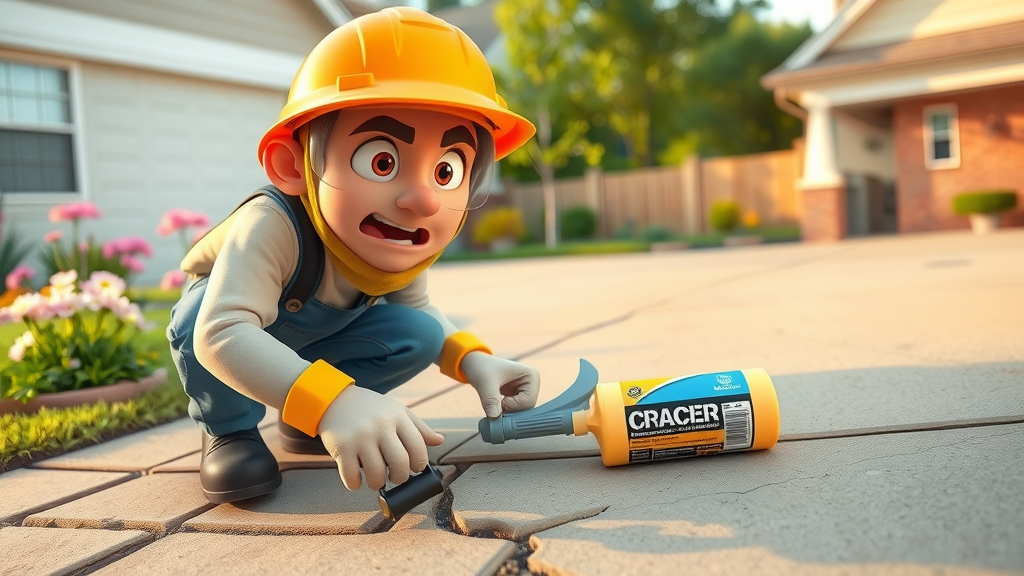
-
Tools and skills required for effective crack repair and resurfacing
-
Why professional assessment is advised for deep crack or major damage
-
Common DIY mistakes that may lead to full driveway replacement
For smaller maintenance issues—such as sealing a small crack or applying a fresh layer of sealcoat—a DIY project can help you save money and tackle regular maintenance efficiently. However, lack of experience, poor preparation, or using the wrong materials may cause problems to resurface or worsen over time. For larger damage, deep cracks, or signs of base failure, hiring a driveway repair professional is advised to avoid costly mistakes and ensure long-lasting results.
The greatest risk with DIY repairs is failing to recognize when your driveway needs more than a quick fix. If repairs are not performed correctly or don’t address underlying issues, you could end up replacing your driveway much sooner than expected. Professional contractors can assess complex repair needs, identify base failures, and use commercial-grade equipment—offering assurances that any money you spend delivers value for years.
FAQs: Fix a Crack or Redo Driveway
-
How do I know if a crack is too deep to repair? A crack is likely too deep if it’s wider than a quarter-inch, has uneven edges, or repeats after multiple repairs. These often indicate base or foundation issues that DIY repairs won’t resolve.
-
Does fixing a crack always prevent replacement? Not always. While repairing small cracks early can extend driveway lifespan, underlying structural failures may eventually necessitate replacement.
-
What are the signs of base failure in my driveway material? Look for widespread sinking, “alligator” pattern cracking, or areas that feel soft when you walk over them. These signs suggest the sub-base is compromised.
-
Can I resurface concrete driveways, asphalt driveways, and gravel driveways equally well? Yes and no. Concrete and asphalt driveways respond well to resurfacing if the base is sound. Gravel driveways are handled by regrading; they don’t get a “new” surface layer the same way.
-
How often should I inspect for new cracks? Inspect at least once each spring and fall, as well as after hard freezes or heatwaves. Early intervention is key to avoiding larger damage.
Key Takeaways: Fixing a Crack vs. Redoing the Driveway
-
Not all cracks demand a full redo—assessment is key.
-
Resurfacing offers a high-value, long-lasting middle ground.
-
Timely crack repairs save money and extend driveway life.
-
Full replacement should be reserved for deep or structural failures.

Conclusion: Making the Smart Choice for Driveway Repair or Replacement
“With knowledge and timely action, you can protect your investment—no matter which option you choose.”
By carefully assessing your driveway’s condition, considering your material and maintenance options, and acting quickly, you can save money and optimize curb appeal for years to come.
Ready to Fix a Crack or Redo Your Driveway? Contact the Experts
Call Us at 610 751-0998 or visit LegacyPavingPA.com
